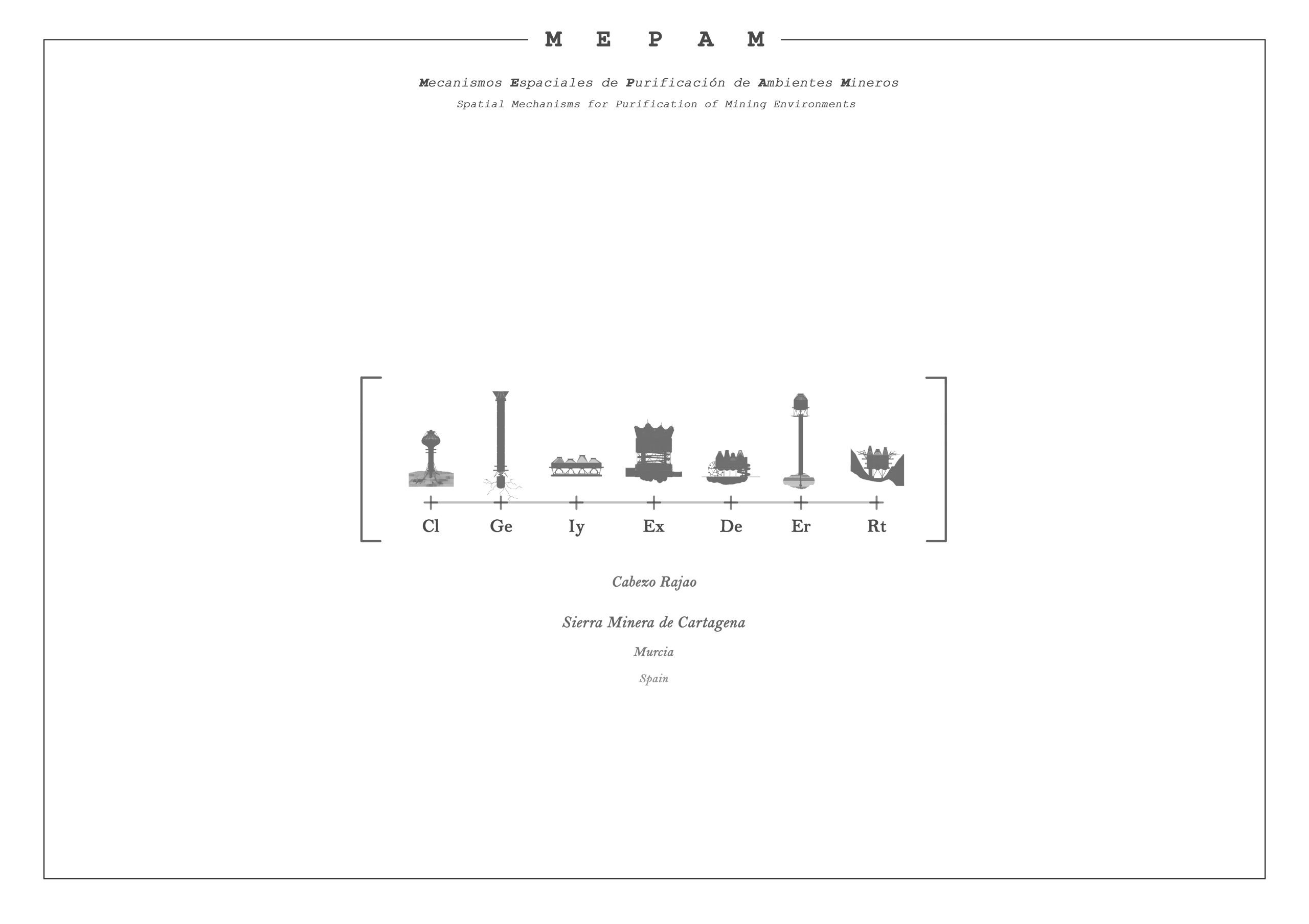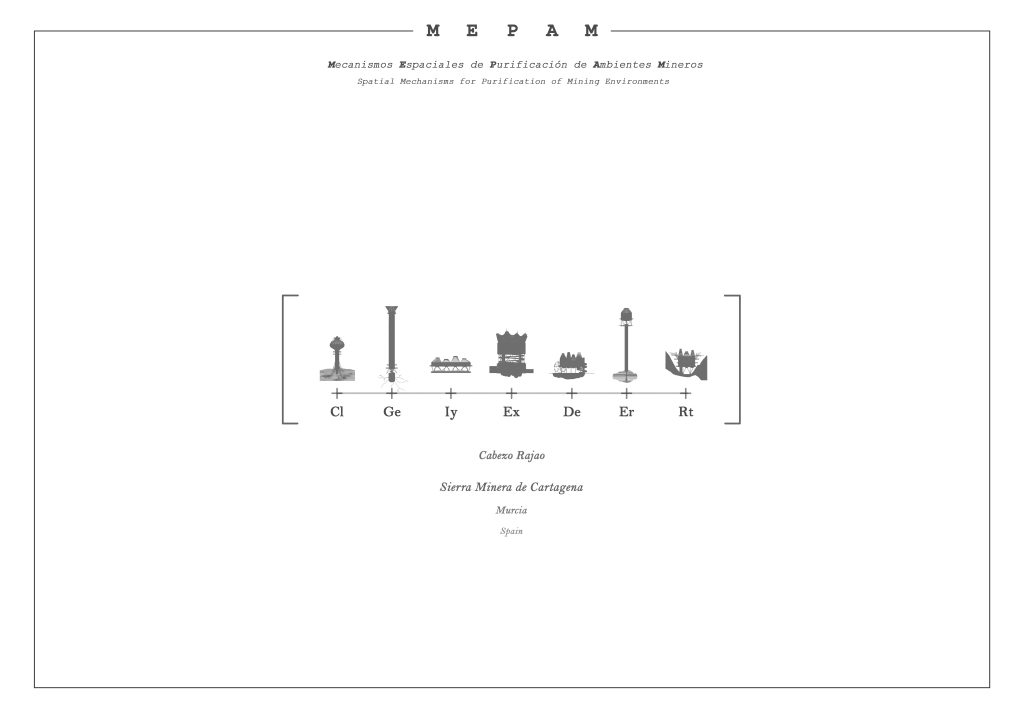The Sierra Minera de Cartagena has more than 80 complexes and 1,151 abandoned mines saturated with polluting materials that have caused ecosystem collapse.
The mining vestiges and ruins remain showing the old nodes of anthropization of the landscape. A network of obsolete infrastructures. Given this, the hypothesis of natural recolonization arises.
The new natural production factory is put into operation as a bioremedial research park. A Garden of the Hesperides oriented towards the encapsulation and production of new ecologies.
The terraformed topography and the mining infrastructure become the support for the construction of the new atmosphere. The limits between the anthropic and natural space dissolve and then the oasis is born.
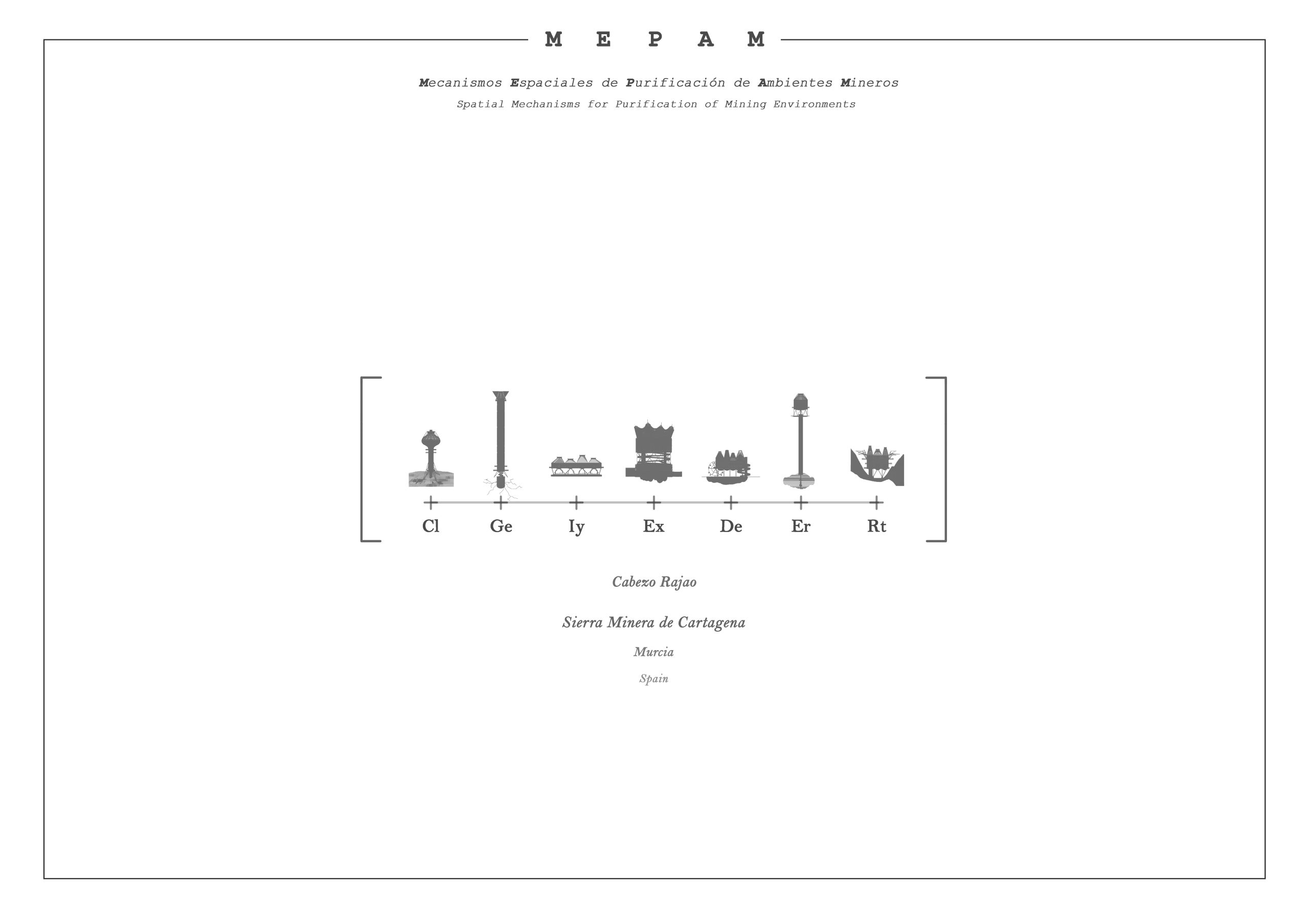
The architectural ecotypes, arranged in different layers, are responsible for centralizing the biotechnology research process. Its spaces are a reflection of the characteristic landscape of the mountains and a terrarium for experimentation with bioremedial botany and water and soil purification. Through programs based on innovative bioremediation methods, the new ecology germinates in the natural production factories that build the new landscape. A new space is created by living mechanisms that produces post-industrial natures. Each layer of the architectural ecotypes focuses on the study and investigation of the metabolism of plant organisms and their behavior in the presence of sediments and waters with high concentrations of sulfides, nitrates and heavy metals. The Ecotypes become the architectures of natural production, each one of them being part of the process of purification of the territory as a chain of factories that function as new organisms of the ecosystem. Components adapted to biotopic conditions as characteristic spaces of the new natural park. In this process they are helped by the Anthropic Creatures, which are common machines that perform the function of the new anthropic animal facility of the ecosystem and that are used by the staff of the complex for the process of cleaning up the landscape. For the application of MEPAM, Cabezo Rajao mining complex is selected for its complexity. It becomes a stage for research into the new ecological factory.
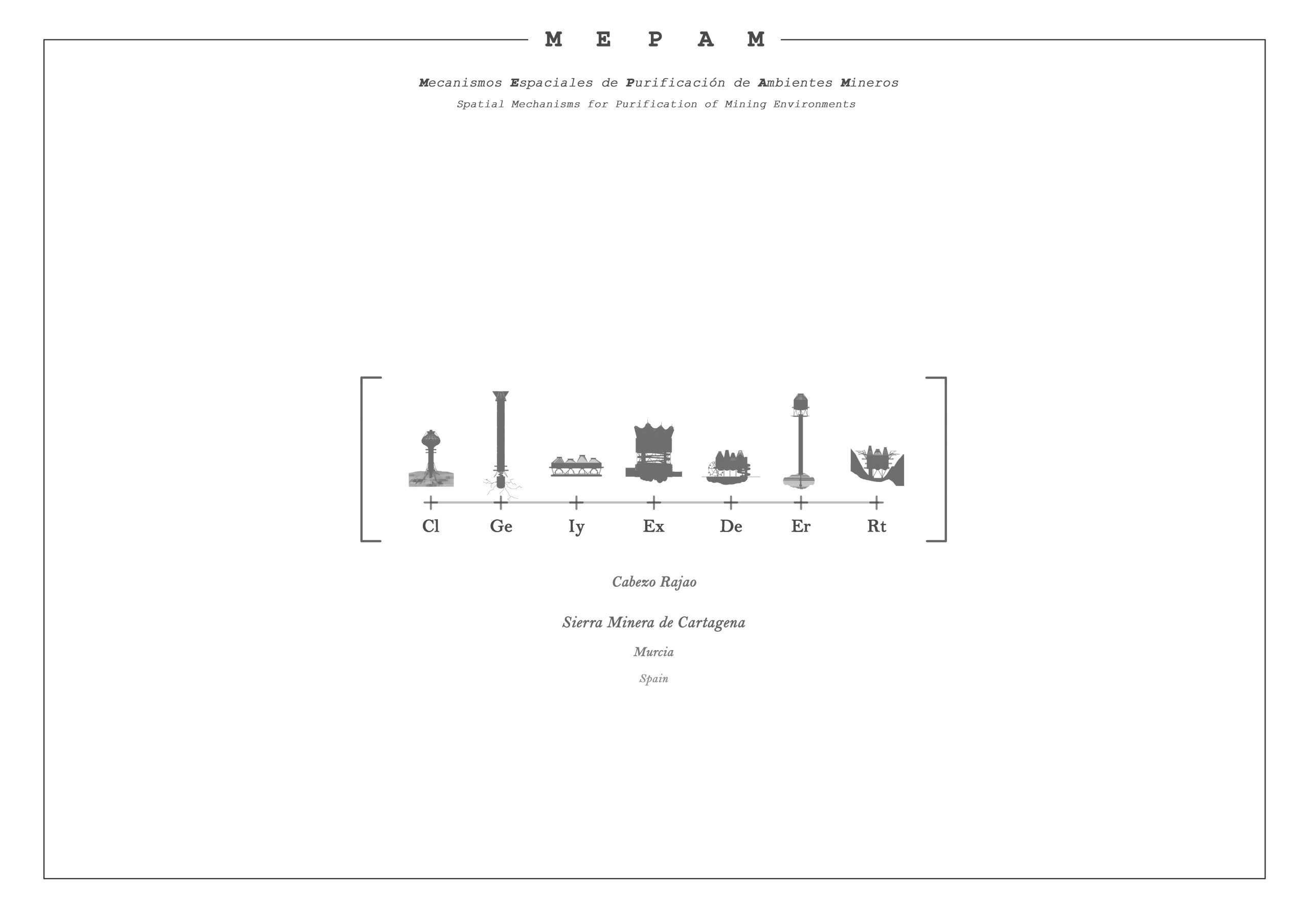
In the MEPAM animalario there are six secondary and one primary ecotypes: Bioreactor: regenerates contaminated hillsides and differentiates biomass into compost in its deposits for subsequent mixing in raw land. Germinating: during its growth phase, it shelters the amalgamation of plant species that hyperaccumulate heavy metals that will repopulate the mountains. Purifier: drains the sulphurous water from the outcrops of the landscape and settles and purifies it in three phases. Injector: using the bioventing method, enriched compressed air is injected into the soil to mobilize microorganisms. Controller: links the intervention levels and houses the soil reconnaissance drones that monitor the evolution and levels of nitrates in the environment. Extractor ecotype: pumps contaminated sludge from self-sacrificing mining wells into a screening hopper for cleaning. The experimental ecotype forms the basis of the natural production factory. Like all ecotypes, it adapts to the shape of the mining ruin on which it sits. It consists of several strata that reflect the layers of which the environment is made up and as such it is made up of a complex vertical structure in layers of different materiality, with an upper greenhouse protected by textiles, a laboratory floor screened with a perforated sheet metal, an atrium for cultivation and land control covered in polycarbonate and a plinth of microalgae pools under curved sheet metal vaults whose shape responds to these pools.
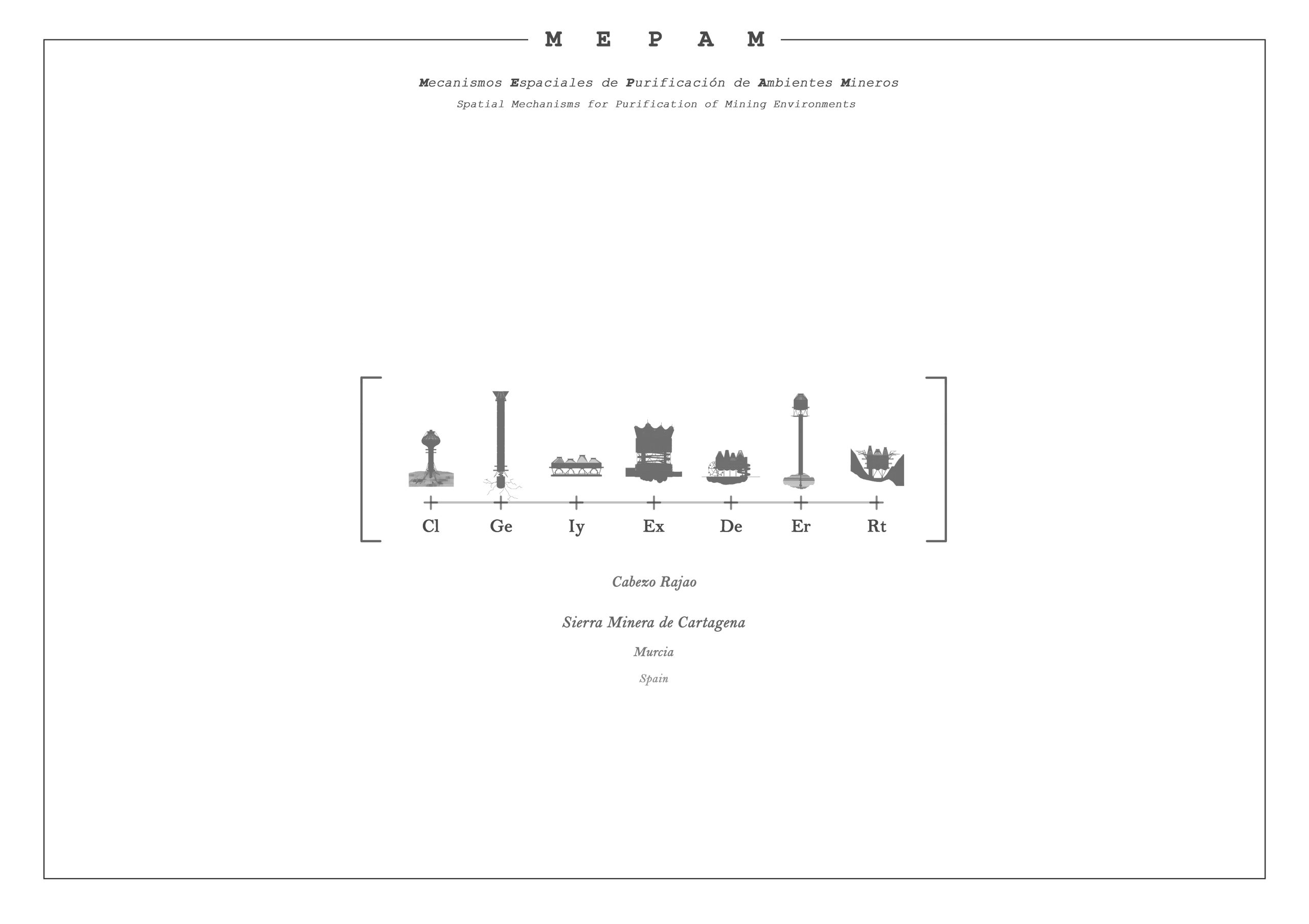
The Board:
